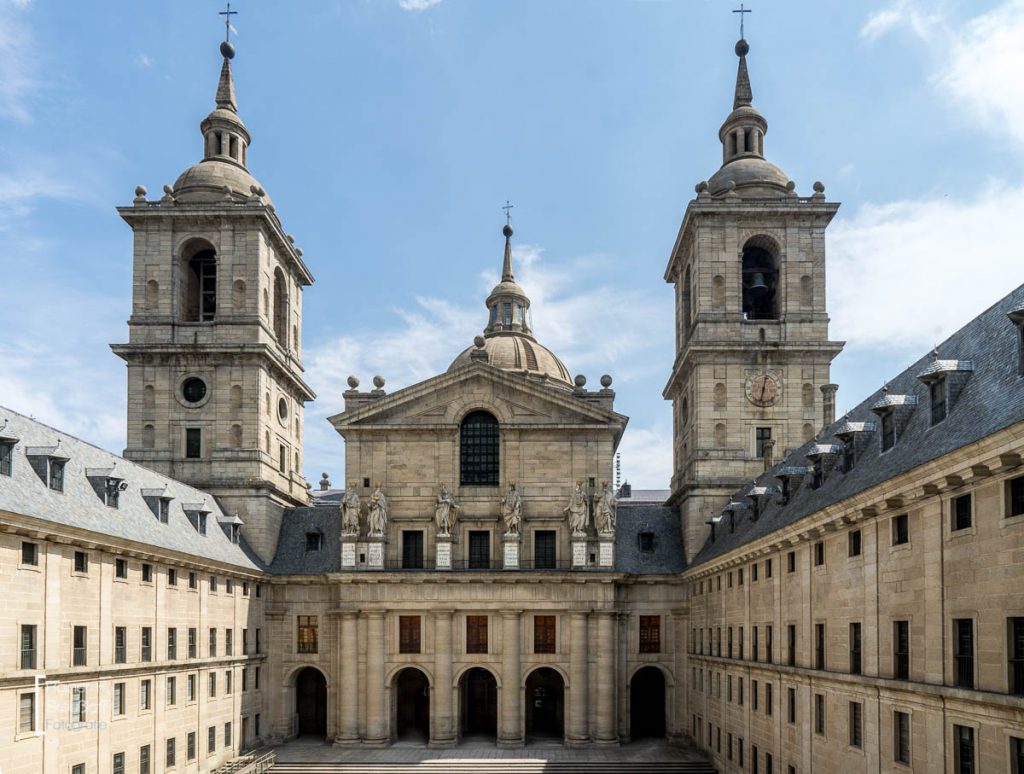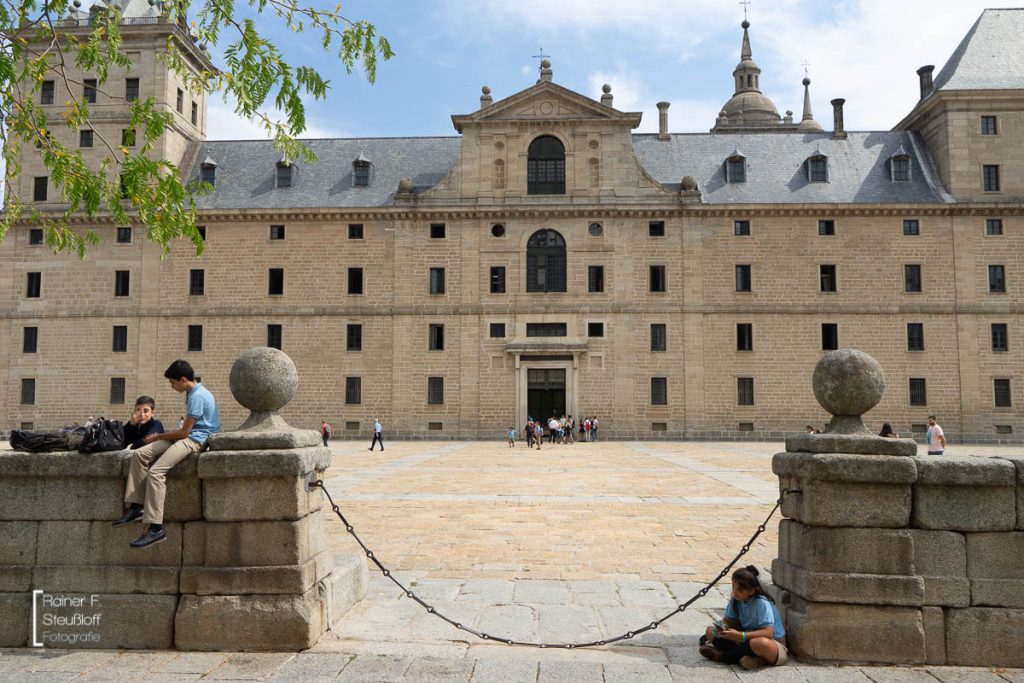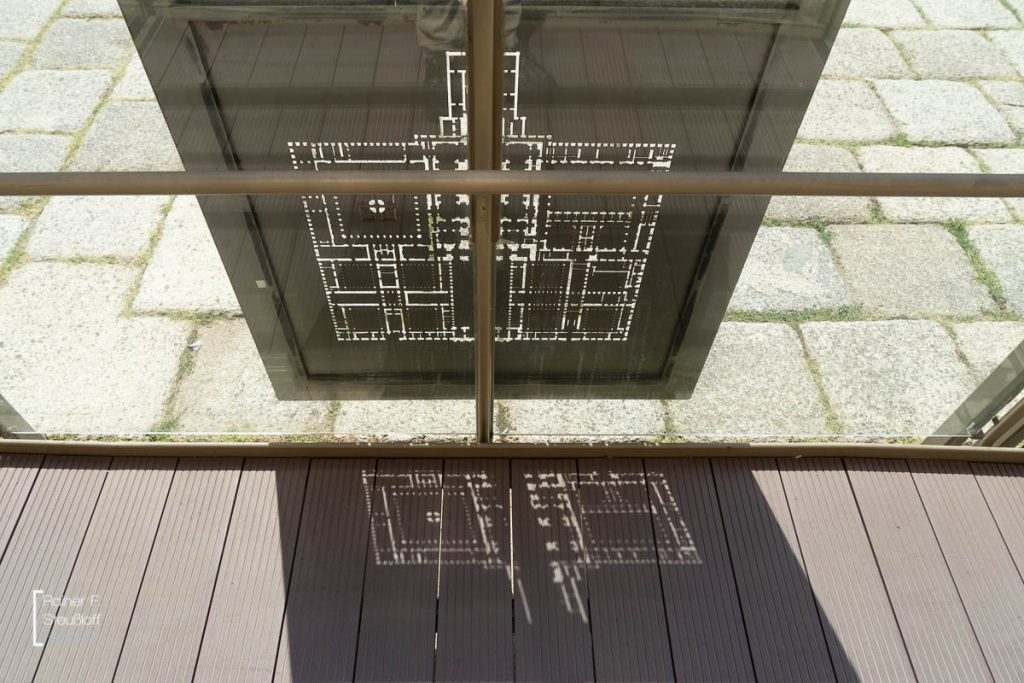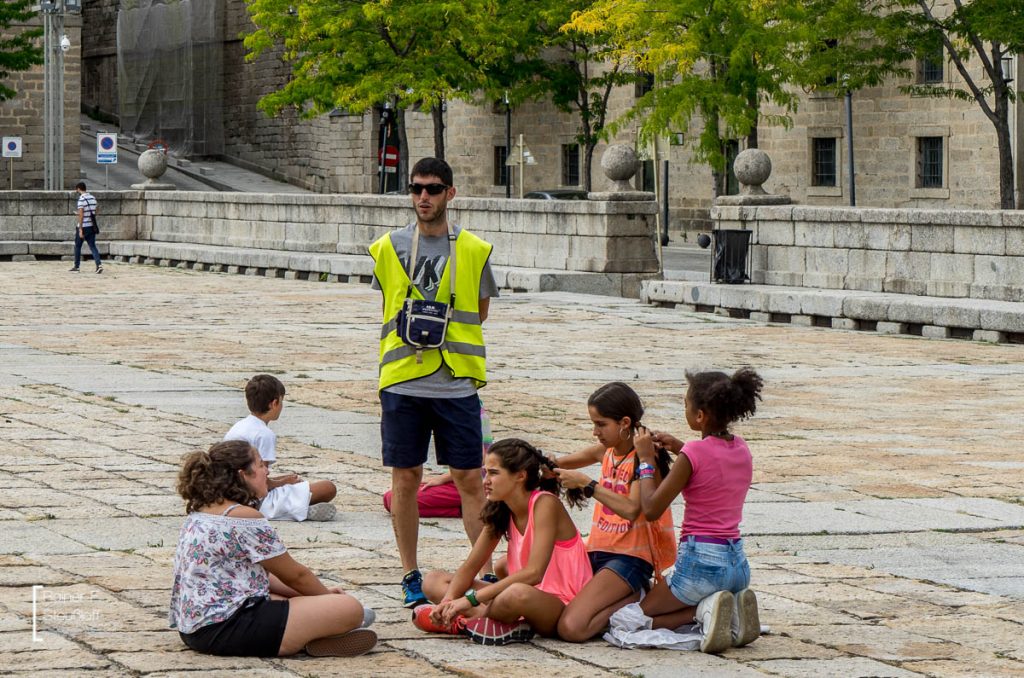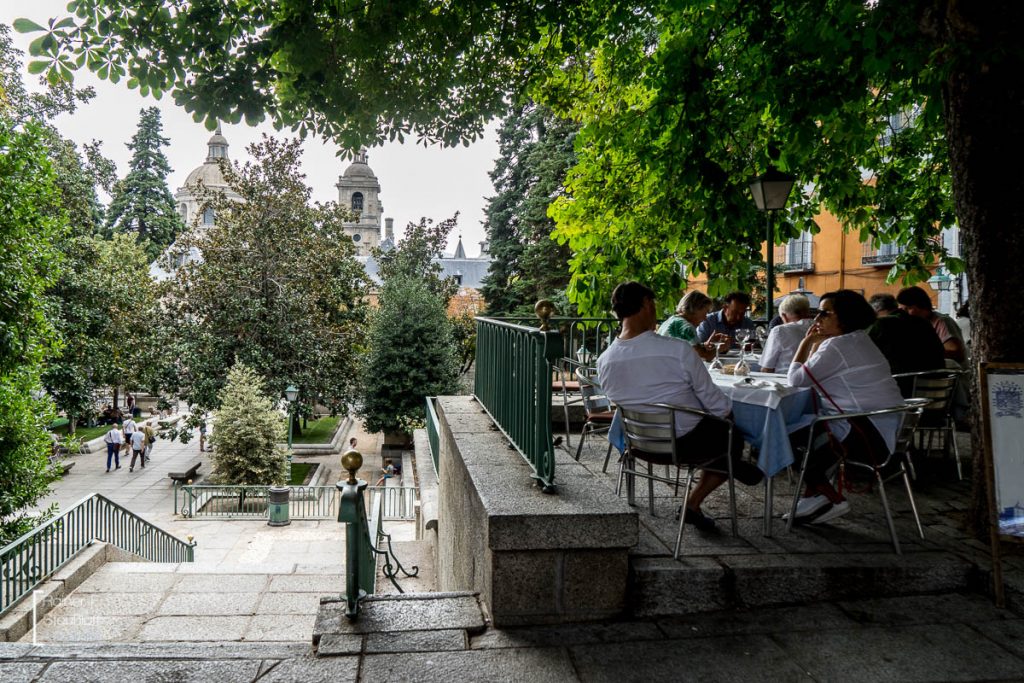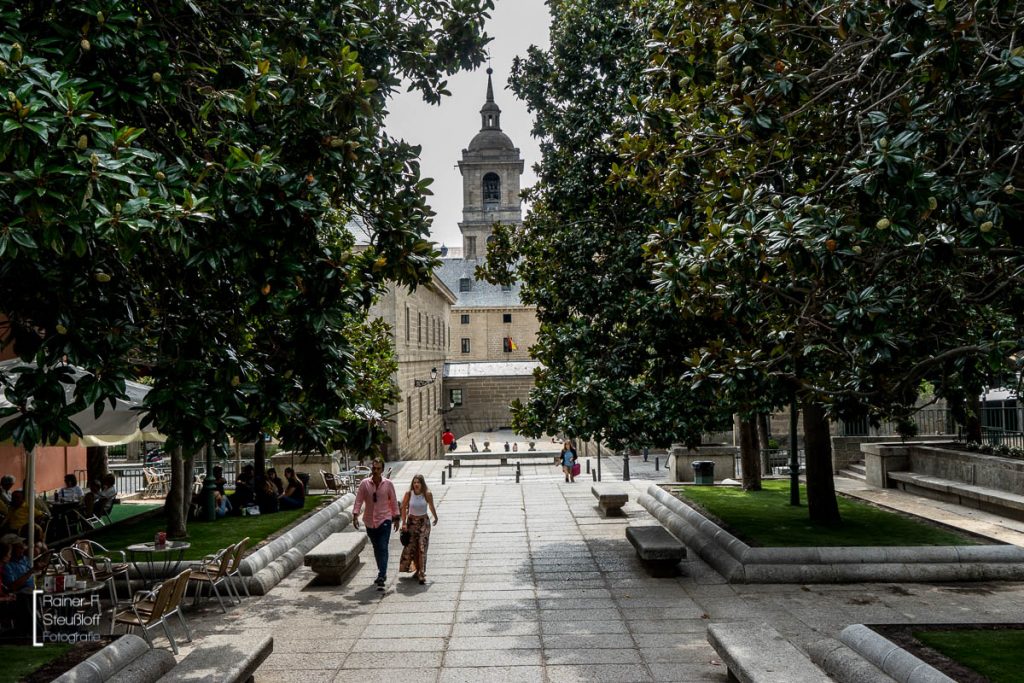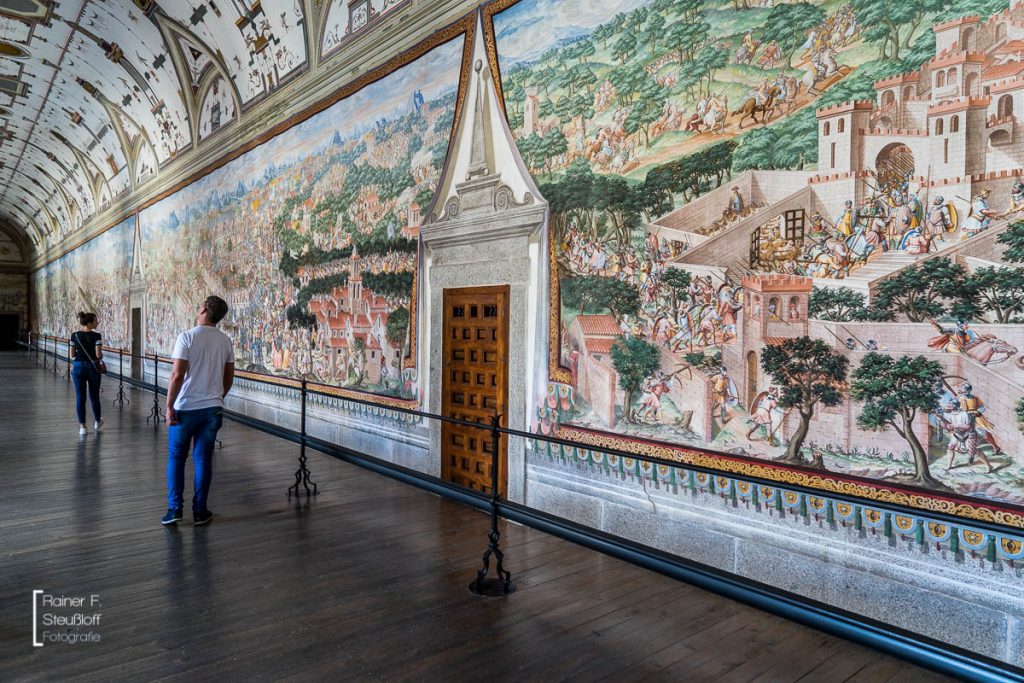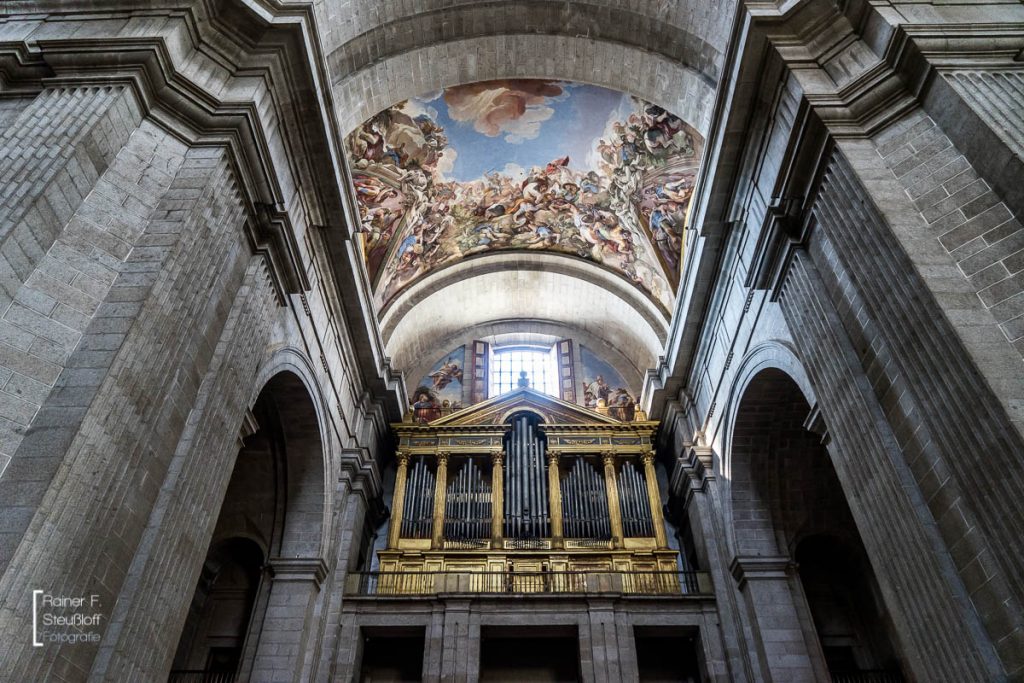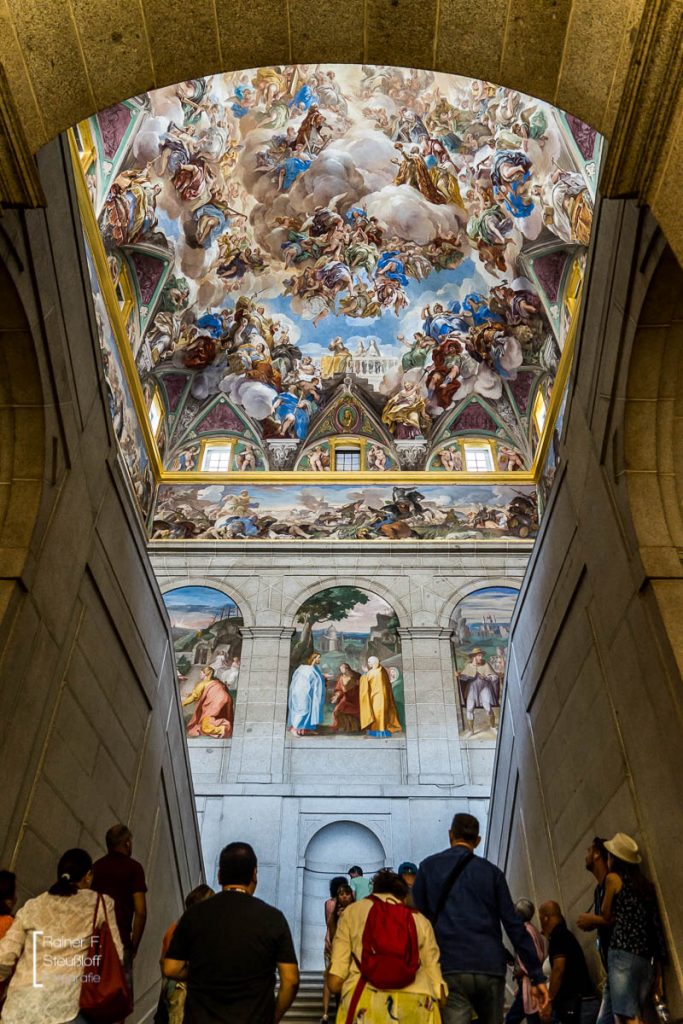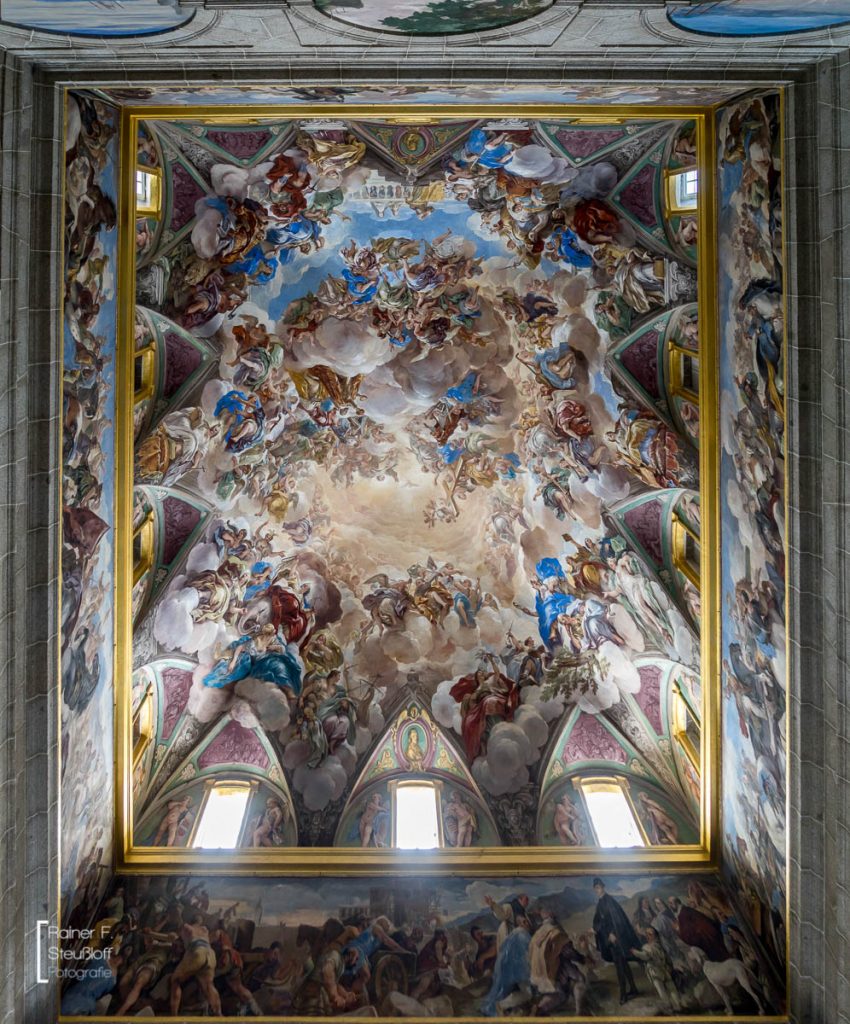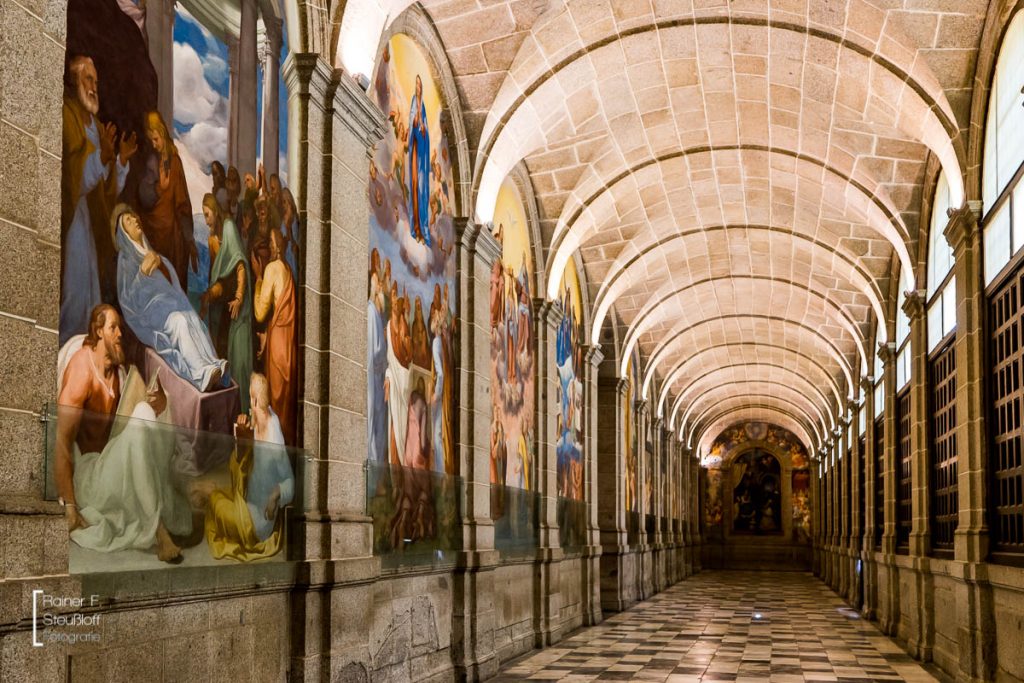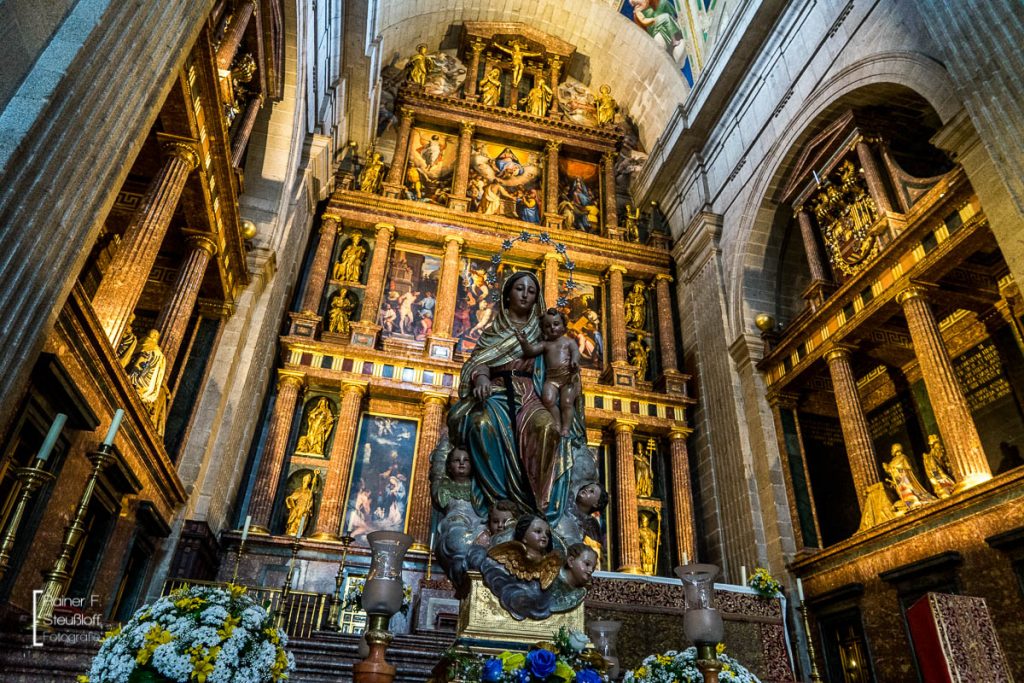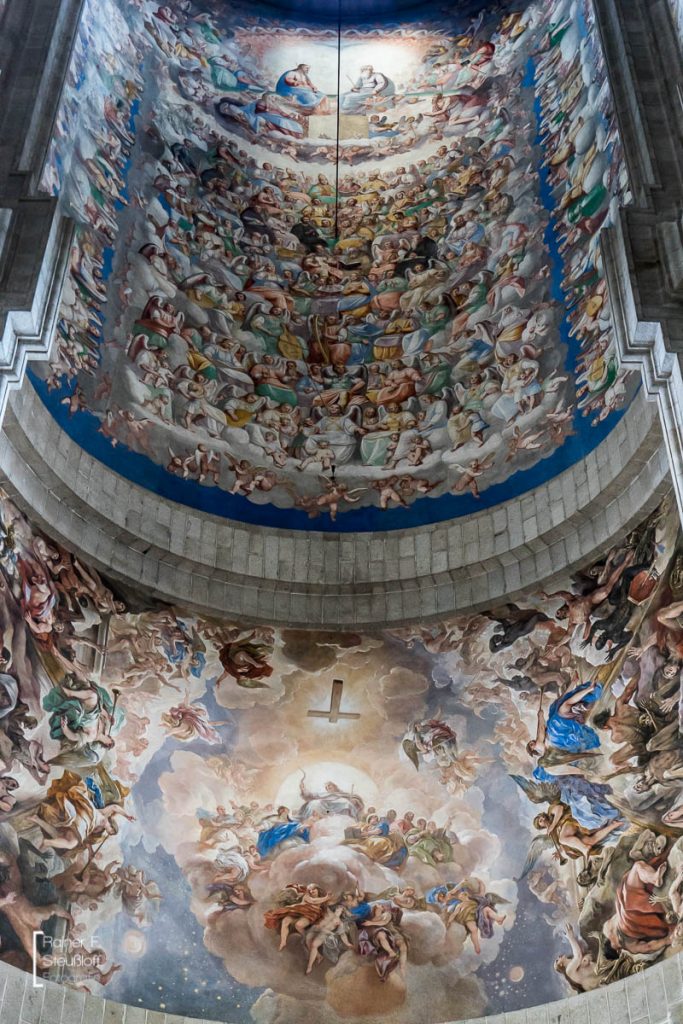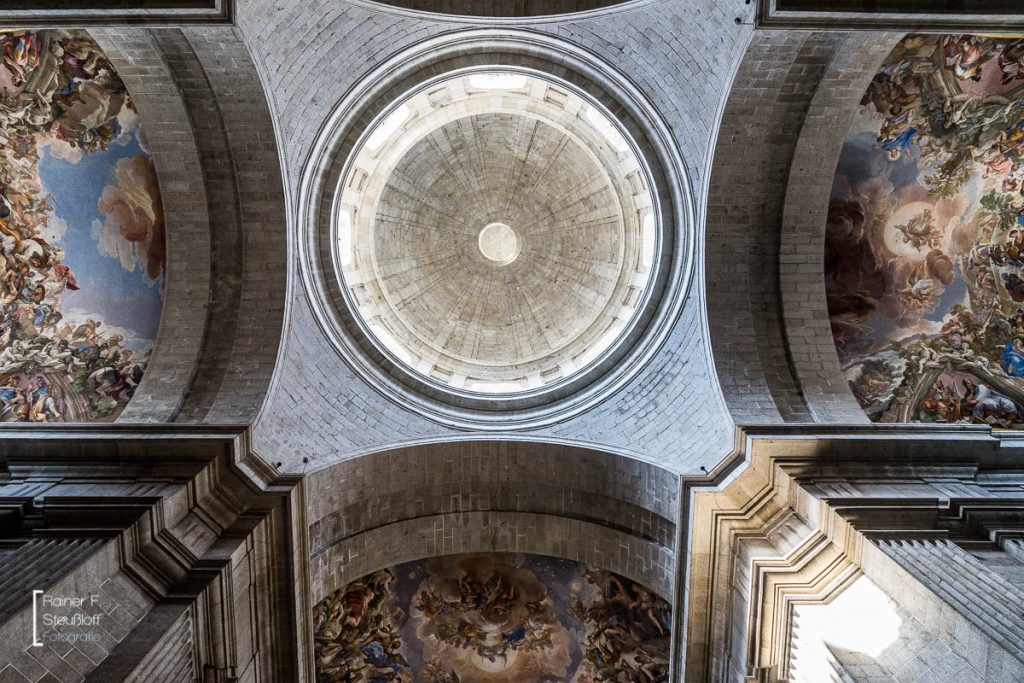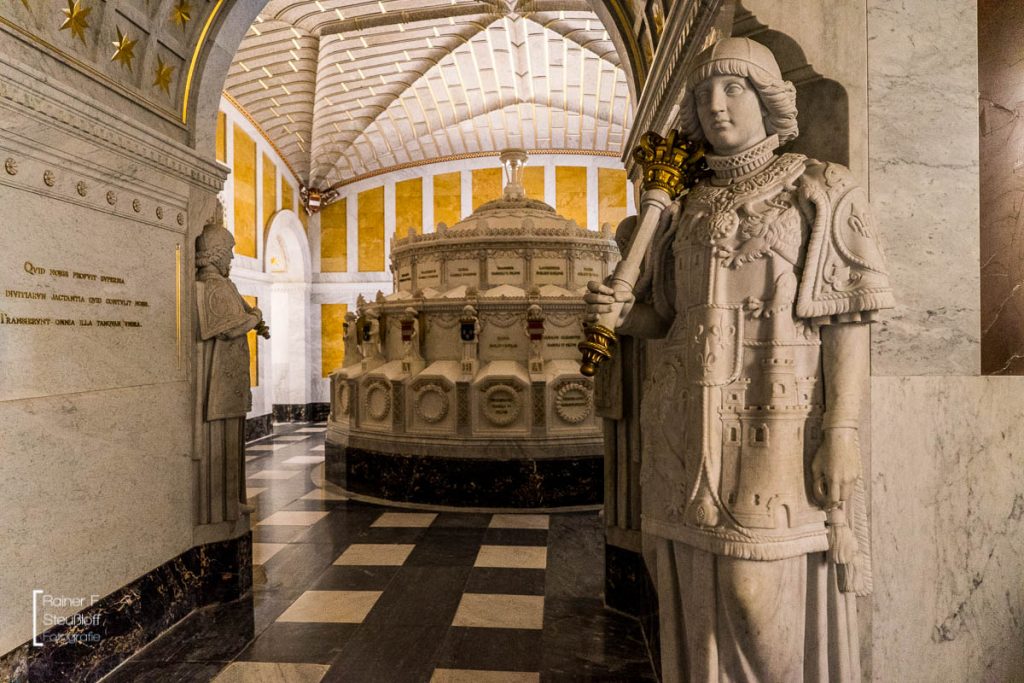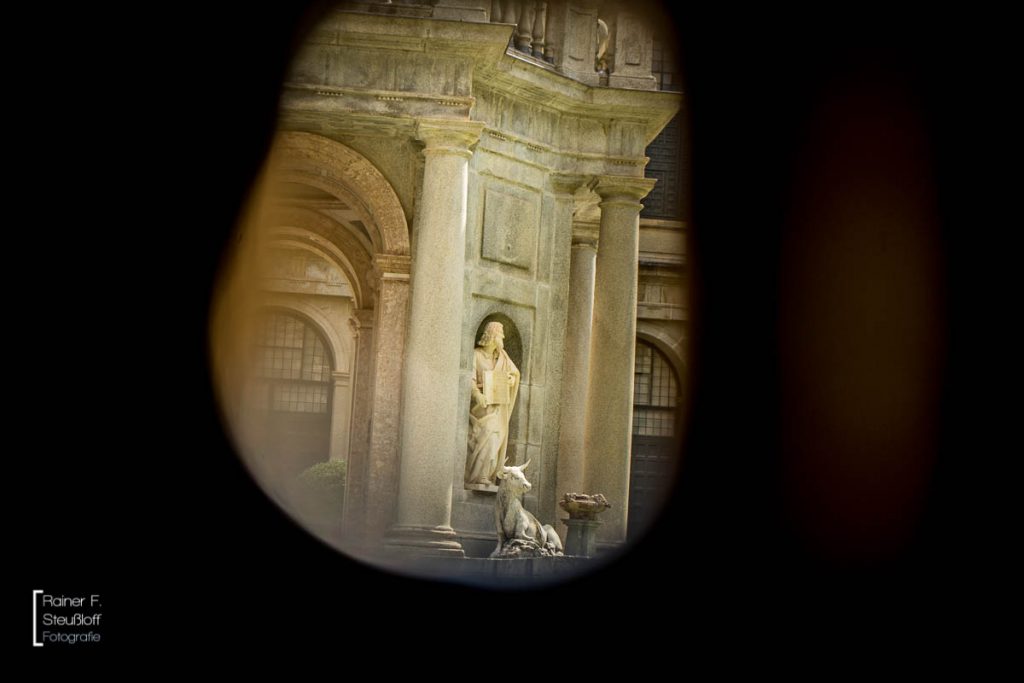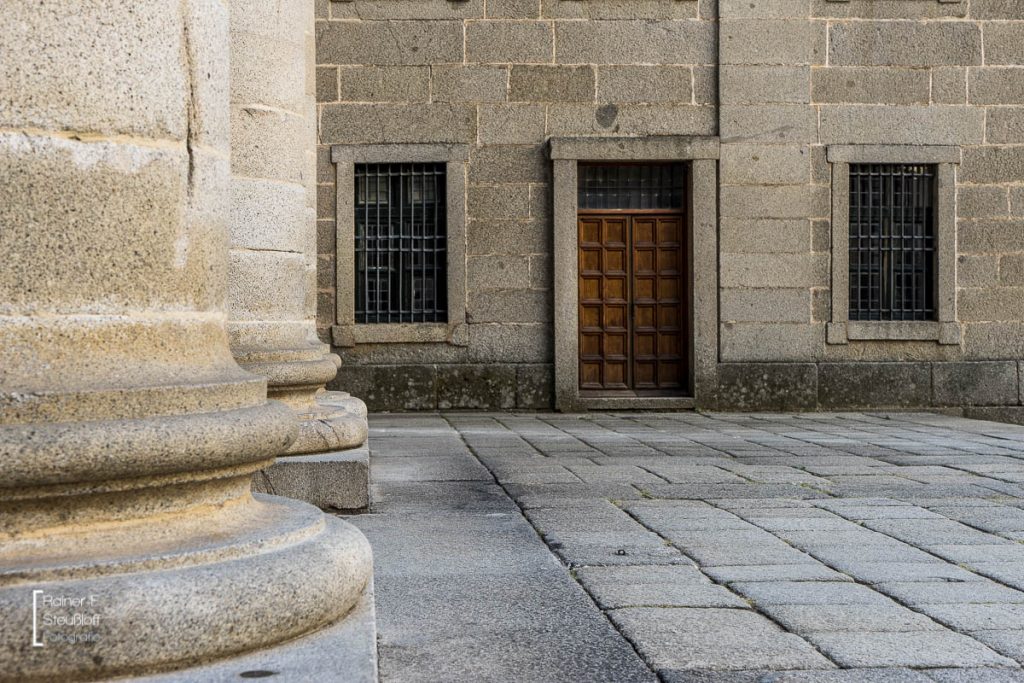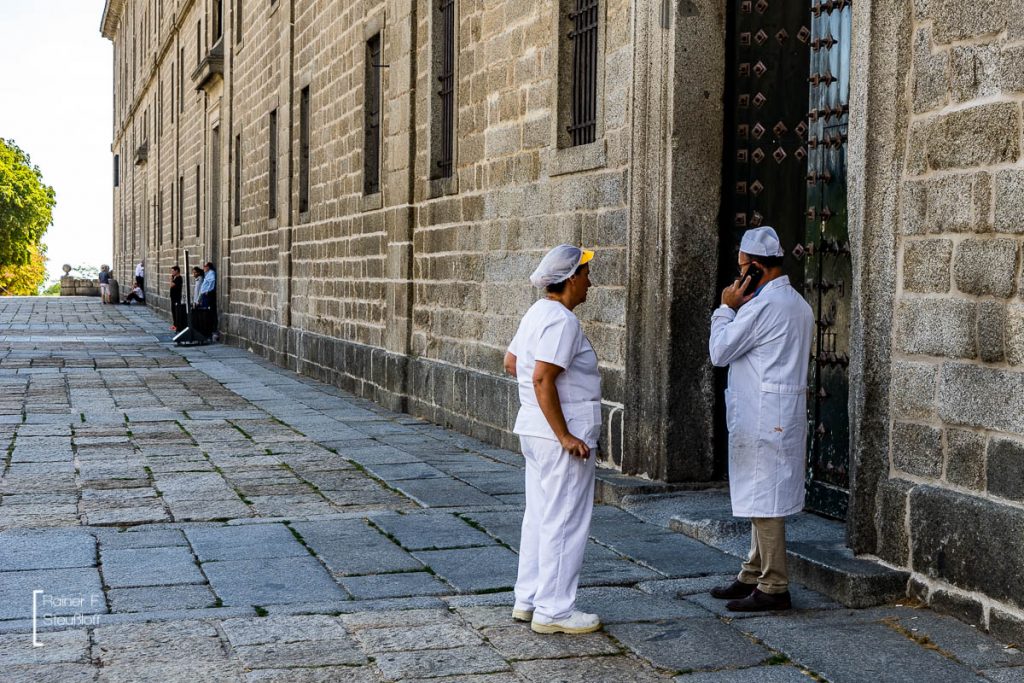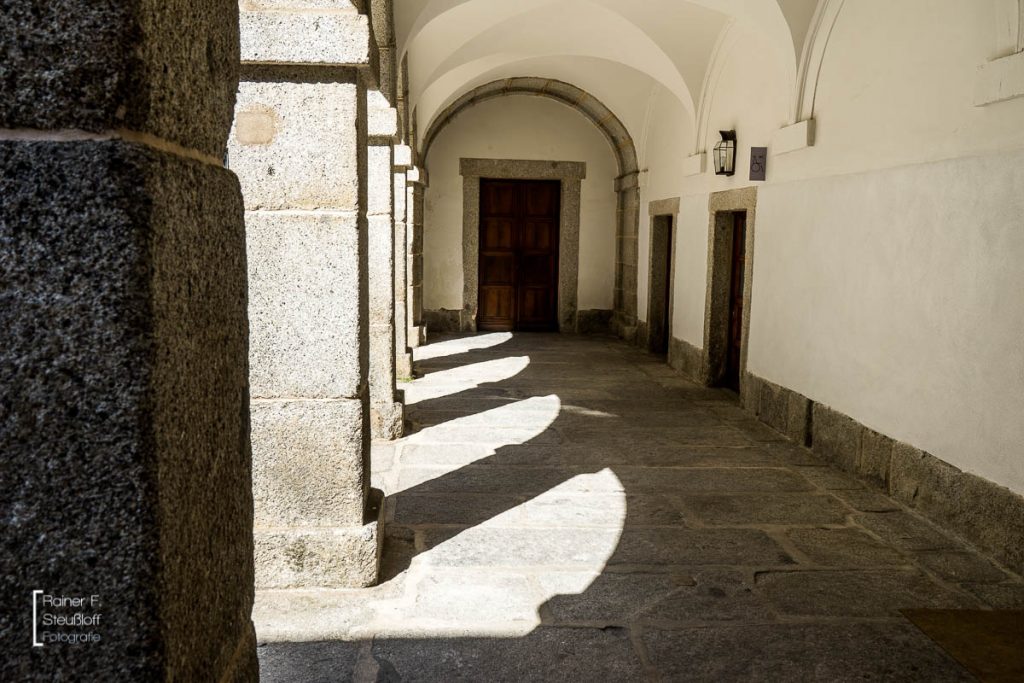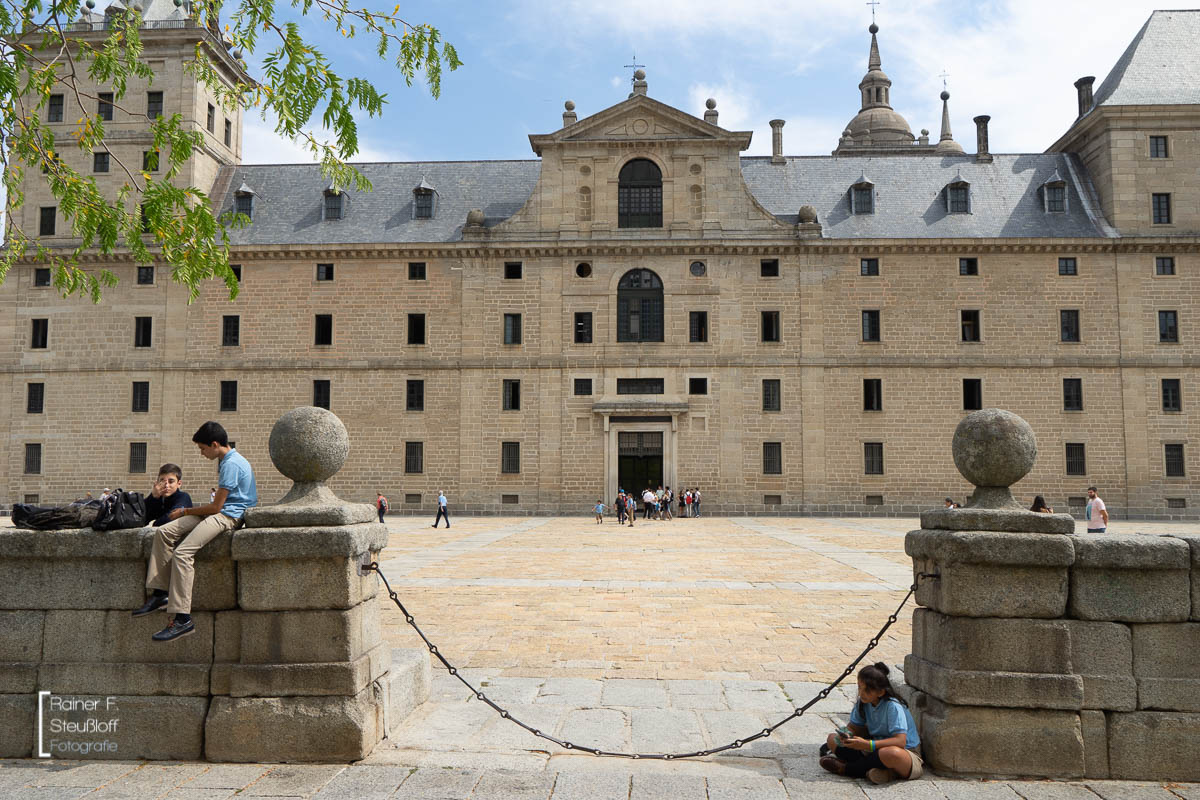Spaniens Schlösser: El Escorial
Auf einem Schutthaufen in der Berglandschaft nördlich von Madrid wurde der Königssitz Real Sitio de San Lorenzo de El Escorial im 16 Jahrhundert gebaut. Klosteranlage, Kathedrale, Königspalast in der Form eines Feuerrostes, auf dem der Hl. Laurentius gefoltert worden sein soll. Genau diese Gemütlichkeit strahlt die gesamte Anlage aus. Der größte Renaissancebau der Welt, Weltkulturerbe, knapp kleiner als der Vatikan, schnörkellos, grau, kalt, war für den gichtkranken König nicht unbedingt die richtige Umgebung.
Innen wandelt man durch lange bemalte Gänge, Säle mit Bildern berühmter Maler von El Greco, Albrecht Dürer bis Heronymus Bosch. Daneben der Schlachtensaal in dem heroische christliche Truppen gegen feige Araber kämpfen. Gerne wird auch die Überlegenheit der Christen über Juden und Muslims bildlich dargestellt.
Die Bibliothek umfasst 40.000 Bücher und Handschriften aus dem Mittelalter. Das eigentlich komplette Fotografierverbot wird hier streng durchgesetzt.
Unter der Kirche, groß wie eine Kathedrale, die Grablege der Könige und ihrer Verwandtschaft. Ein weit verzweigter Ort von Kapellen und Särgen unterschiedlicher Art für die 100 Infanten, tiefer unten dann die schwarzen Särge der 26 König*innen.
The royal residence Real Sitio de San Lorenzo de El Escorial was built in the 16th century on a pile of rubble in the mountainous landscape north of Madrid. A monastery complex, cathedral and royal palace in the shape of a fire grate on which St Laurence is said to have been tortured. It is precisely this cosiness that the entire complex radiates. The largest Renaissance building in the world, a World Heritage Site, just smaller than the Vatican, unadorned, grey and cold, was not exactly the right environment for the king with gout.
Inside, you wander through long painted corridors, halls with paintings by famous artists from El Greco and Albrecht Dürer to Heronymus Bosch. Next to it is the battle hall in which heroic Christian troops fight against cowardly Arabs. The superiority of Christians over Jews and Muslims is also frequently depicted.
The library contains 40,000 books and manuscripts from the Middle Ages. The complete ban on photography is strictly enforced here.
Under the church, as large as a cathedral, is the burial place of the kings and their relatives. A widely ramified place of chapels and coffins of various kinds for the 100 infants, then deeper down the black coffins of the 26 kings.
